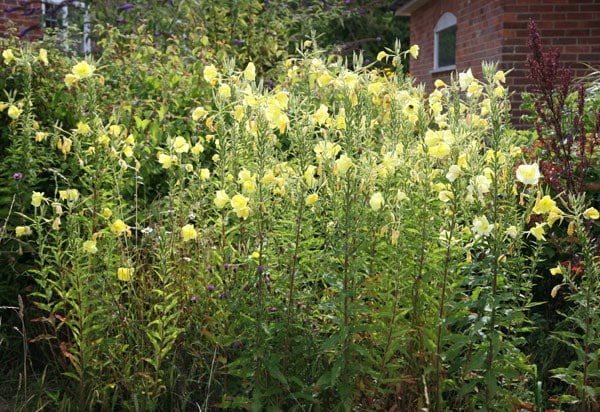Evening primroses are gorgeous flowering perennials that come in a range of vibrant colors. Their bright blooms and wonderful fragrance make them a favorite for gardens, borders, and containers. If you’re looking to add evening primroses to your yard or garden, here is a helpful guide to finding evening primrose plants for sale and choosing the right varieties.
Overview of Evening Primroses
Evening primroses belong to the genus Oenothera and are native to North and South America. They are known for their colorful flowers that bloom in the evening, hence the name. The blooms open in late afternoon, release their lovely scent at night, and close up again in the morning.
Evening primroses thrive in full sun and are very hardy perennials in zones 3-9. They grow best in well-drained soil but tolerate poor, dry conditions. Evening primroses spread readily by rhizomes and reseeding. They attract butterflies and hummingbirds to the garden.
Popular evening primrose varieties include
-
Missouri Evening Primrose – Lemon yellow fragrant blooms on 12 inch stems. Blooms summer to fall. Very tough and adaptable.
-
Ozark Sundrops – Bright yellow, 3 inch flowers spring through summer. Grows 18-24 inches tall. Fragrant and long blooming.
-
Fragrant Evening Primrose – Prolific light yellow blooms with red centers on and off all summer. Grows 3-4 feet tall. Intensely fragrant.
-
White Evening Primrose – Pure white blooms from early to late summer. Grows 2-3 feet tall. Great for moon gardens.
Where to Find Evening Primrose Plants for Sale
You can find potted evening primrose plants at local garden centers and nurseries, usually in the perennial section. Online nurseries also offer a great selection of evening primrose varieties available for shipping.
When shopping for evening primroses, look for young, healthy plants with established root systems and no signs of disease, pests, or damage. Avoid rootbound or pot-bound plants.
Reputable online sellers such as High Country Gardens and Spring Hill Nursery have excellent evening primrose options to order online and have shipped to your home. You’ll find detailed plant descriptions, growing information, shipping schedules, and bundles that allow you to purchase multiple primrose plants at a discount.
If you have gardening friends, another option is taking divisions or cuttings from their established evening primroses to start new plants.
When to Plant Evening Primroses
Evening primroses can be planted in spring once the threat of hard frost has passed, or in fall in zones 3-8. The optimal soil temperature for planting is 60-65°F.
If planting potted primroses from a nursery or online, follow the shipping schedule for your zone, usually from March through May for spring planting. For fall planting, primroses shipped from August through October will establish roots before winter dormancy.
Take care not to plant too early when soils are still cold and wet. Wait until the soil has warmed and can be worked easily.
How to Plant Evening Primroses
When preparing a bed for evening primroses, make sure the soil is well-drained. Amend clay soils with compost or peat moss to improve drainage.
Space evening primrose plants 18-24 inches apart in an area with full sun exposure. Dig a hole no deeper than the root ball and place the plant at the same level it was growing in the container. Backfill soil and water thoroughly after planting.
During the first season, provide 1 inch of water per week until established. Mulch around the plants to retain soil moisture and reduce weeds. Avoid fertilizing at time of planting but feed with a balanced organic fertilizer starting the second season.
Caring for Evening Primroses
Once established, evening primroses are quite low maintenance. Here are some tips for ongoing care:
-
Provide full sun exposure. At least 6 hours of direct sun is ideal.
-
Water deeply 1-2 times per week depending on rainfall. Let the soil dry slightly between waterings.
-
Prune spent flower stems back to basal foliage to encourage reblooming.
-
Divide large clumps every 3-4 years in spring to rejuvenate.
-
Mulch plants annually with 2-3 inches of shredded bark or compost.
-
Fertilize in early spring and midsummer with organic fertilizer.
-
Cut plants back to 6-12 inches in late fall after first frost.
-
Remove dead foliage and debris around plants before new growth emerges in spring.
Evening primroses are excellent additions to the garden with their vibrant, fragrant blooms and easy care nature. Follow this guide when looking for evening primrose plants for sale and providing the right growing conditions, and you’ll be rewarded with years of beauty from these fabulous flowers.
Appearance Of This Perennial
Oenothera biennis features clusters of four-petaled, bowl-shaped, two-inch-wide yellow blooms that blossom at the top of the stems. The heart-shaped petals surround eight yellow stamens and a cross-shaped stigma. The plant grows three to five feet tall. Its stiff, purple stem is covered with long olive, light, or medium-green leaves that grow in a rosette at the base of the plant.
Add Delightful Color to Your Landscape With TN Nursery
You should plant Oenothera biennis in your garden if you want an easy way to add rustic color to your yard and get more bees, birds, and butterflies. These bright, fragrant plants are sure to bring you joy during the late summer months.
Evening Primrose (Oenothera Speciosa) | 2 Reasons Not to Grow
FAQ
When should I plant evening primrose?
Where is the best place to plant evening primrose?
Does evening primrose come back every year?
Do evening primroses like sun or shade?
- The Ultimate Guide to Growing Strawberries in Raised Beds - August 8, 2025
- No-Dig Garden Beds: The Easiest Way to Grow a Beautiful Garden - August 6, 2025
- How to Protect and Preserve Wood for Raised Garden Beds - August 6, 2025

